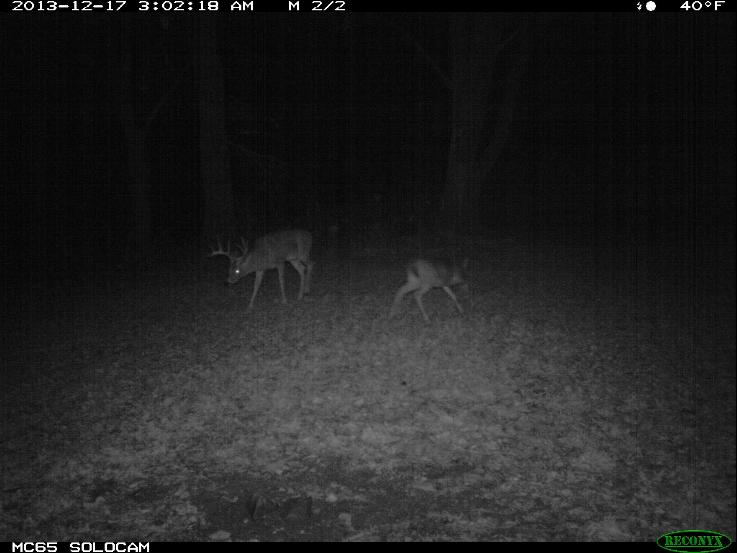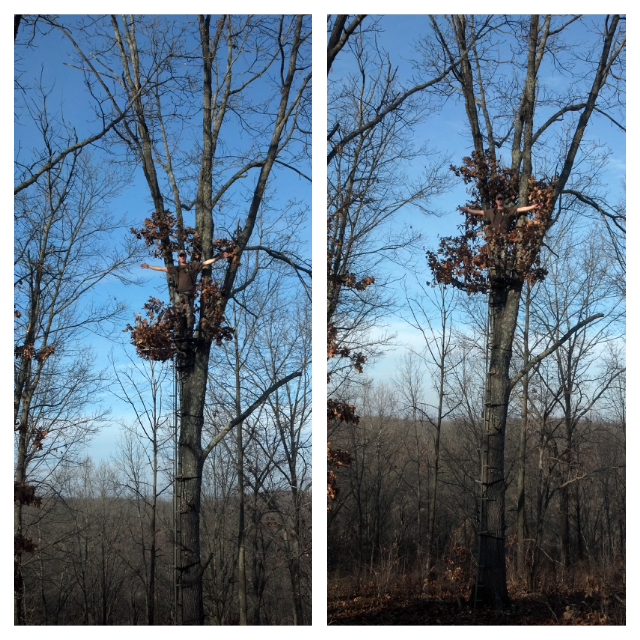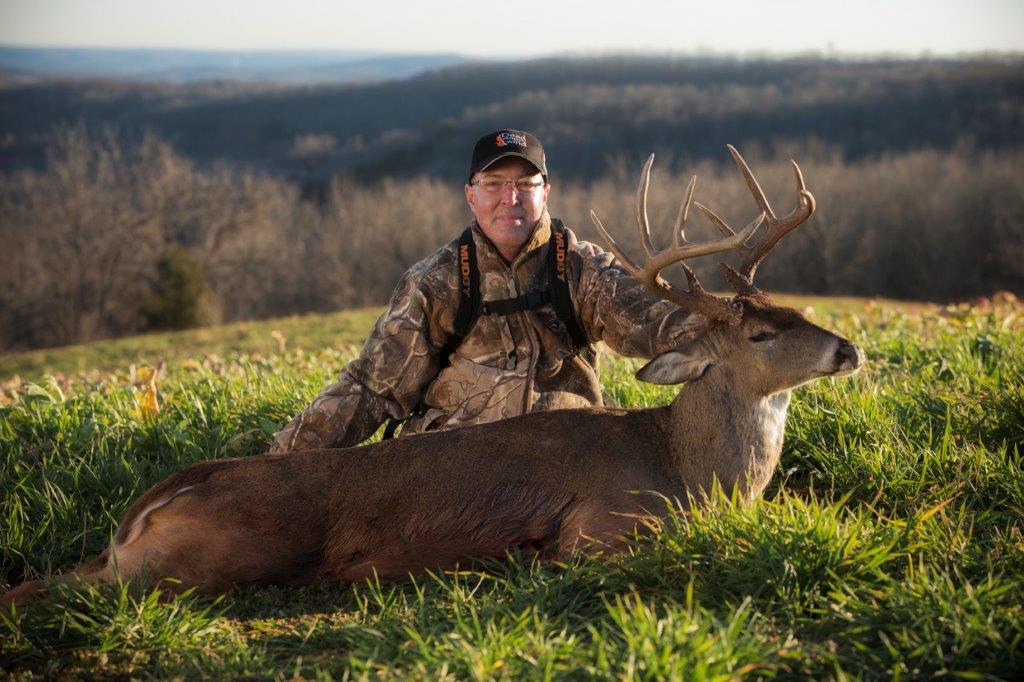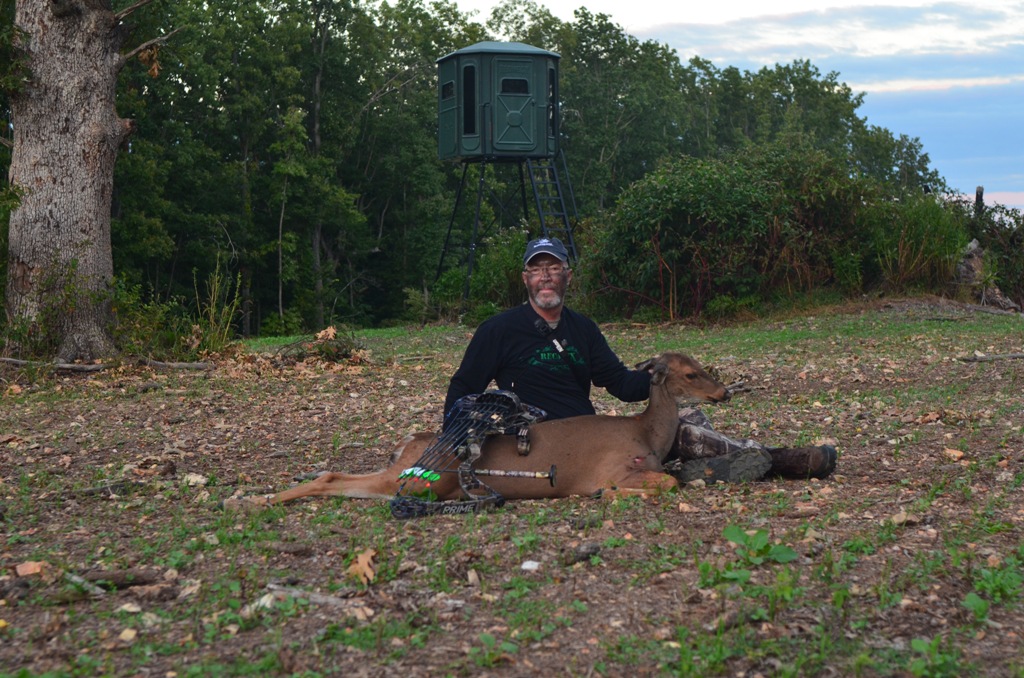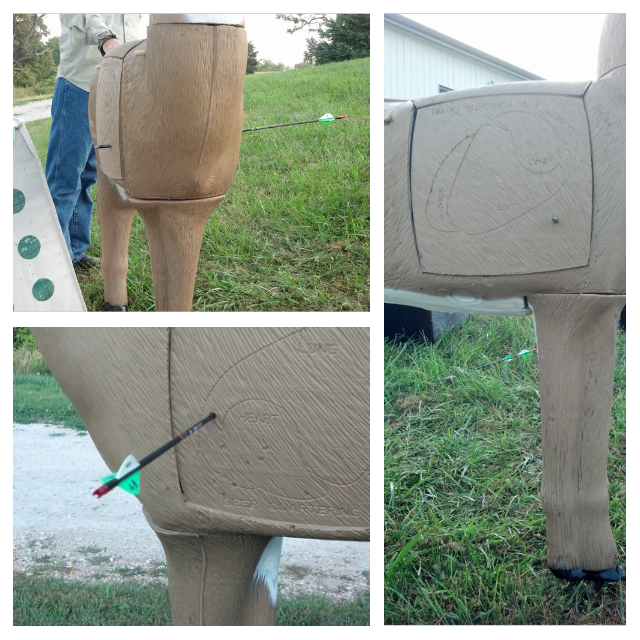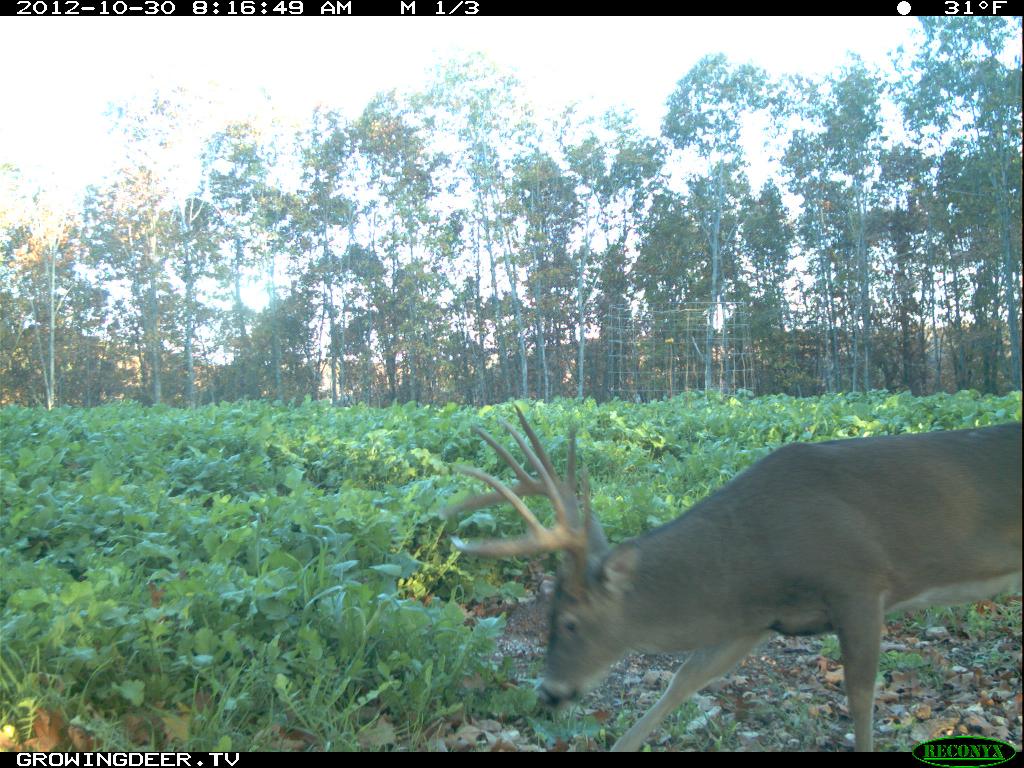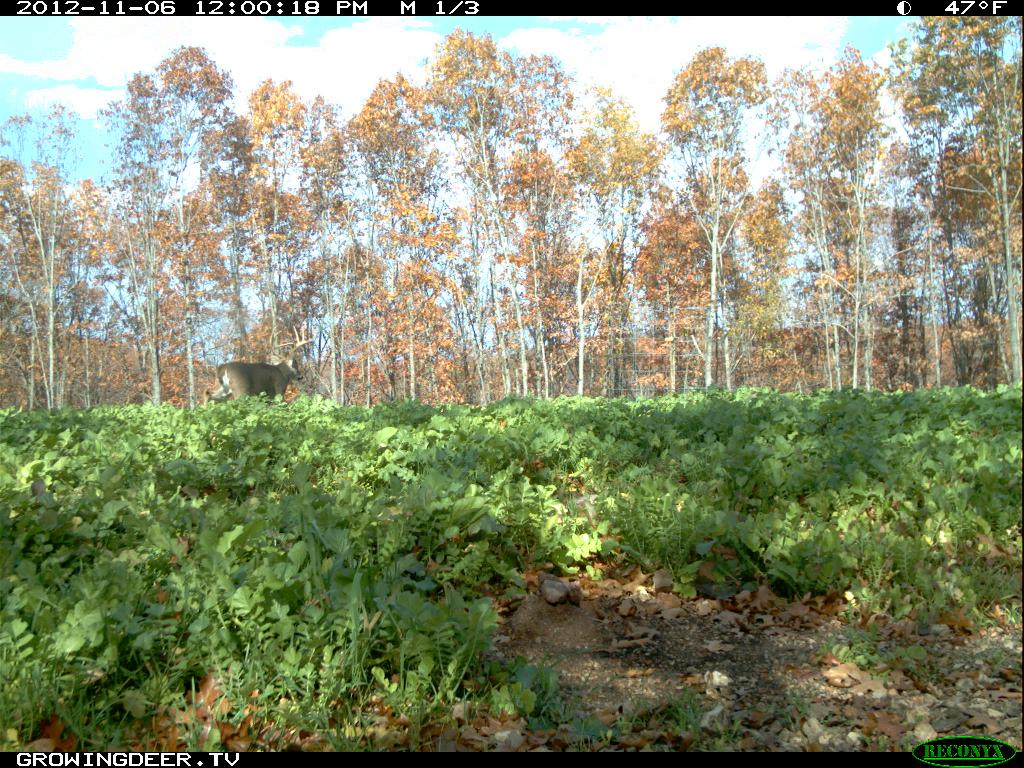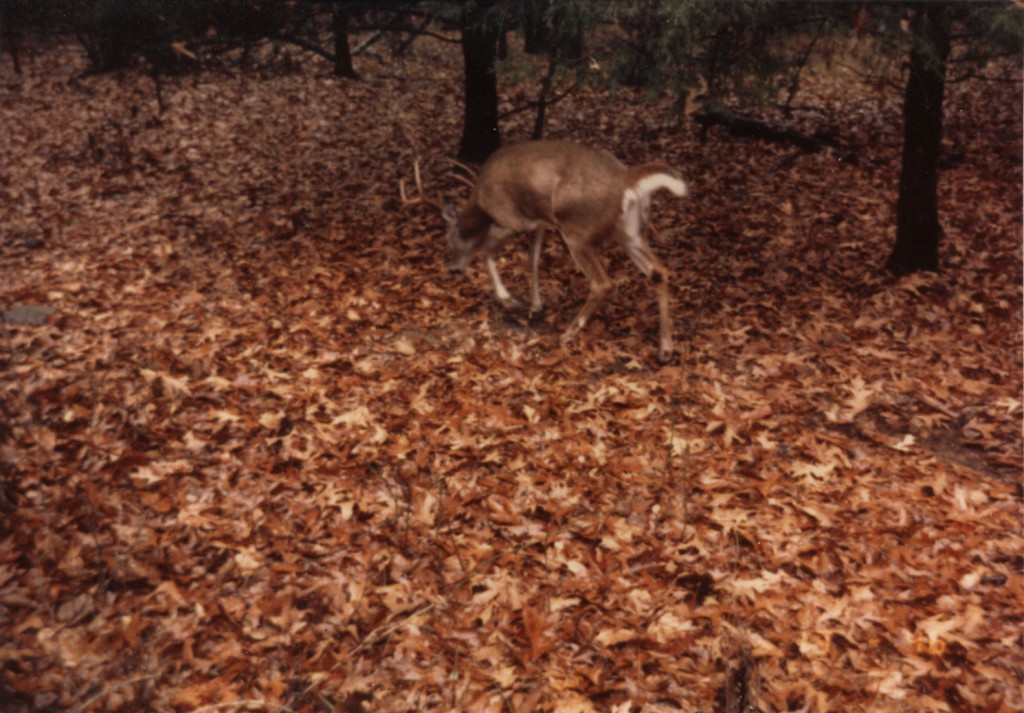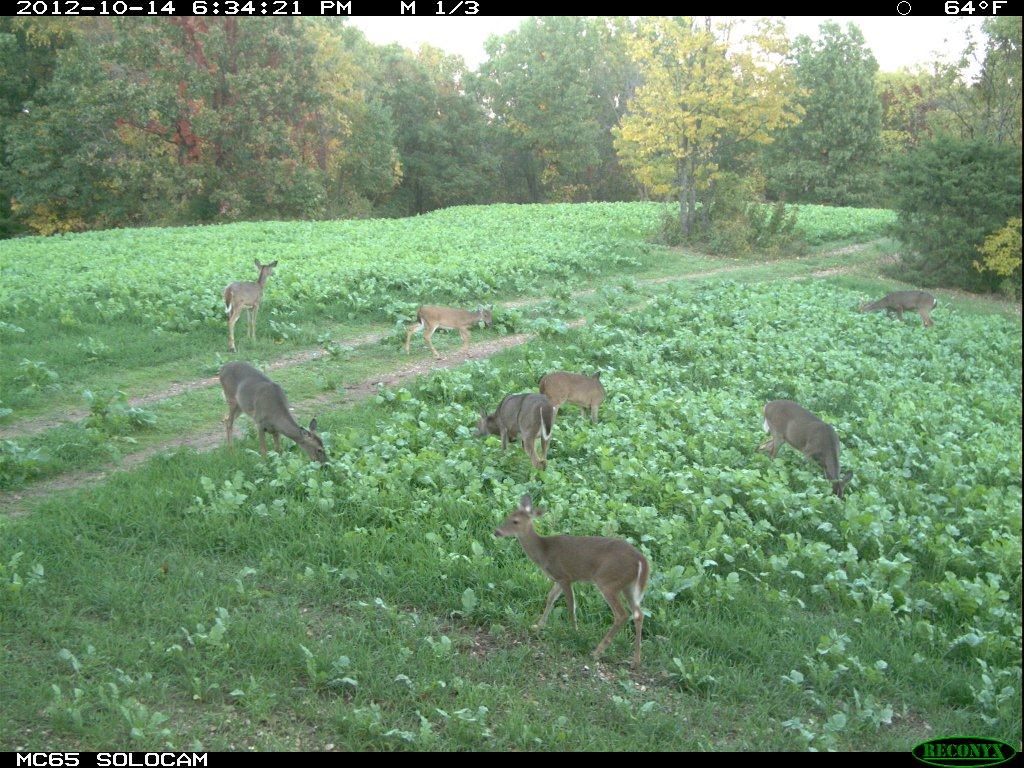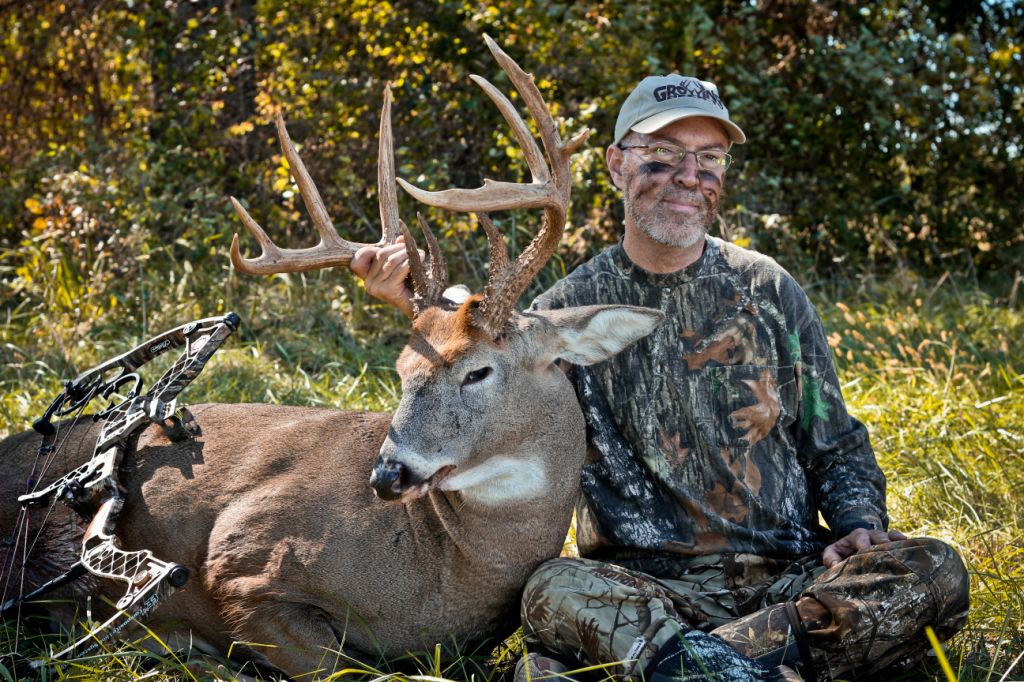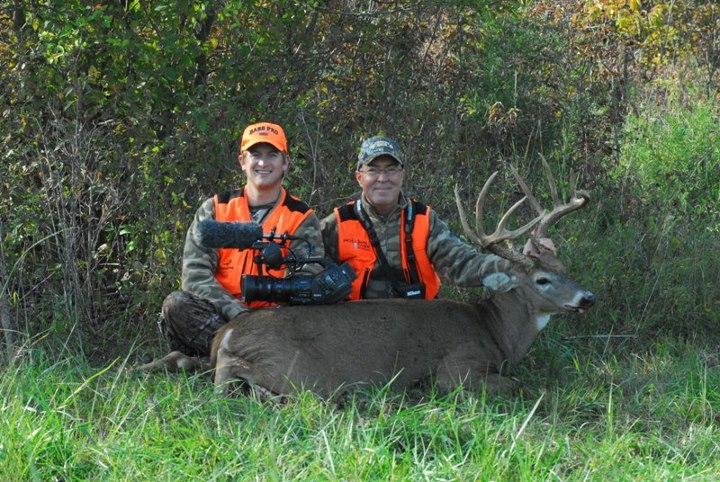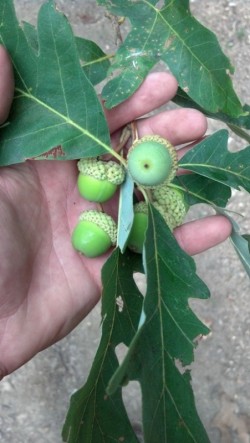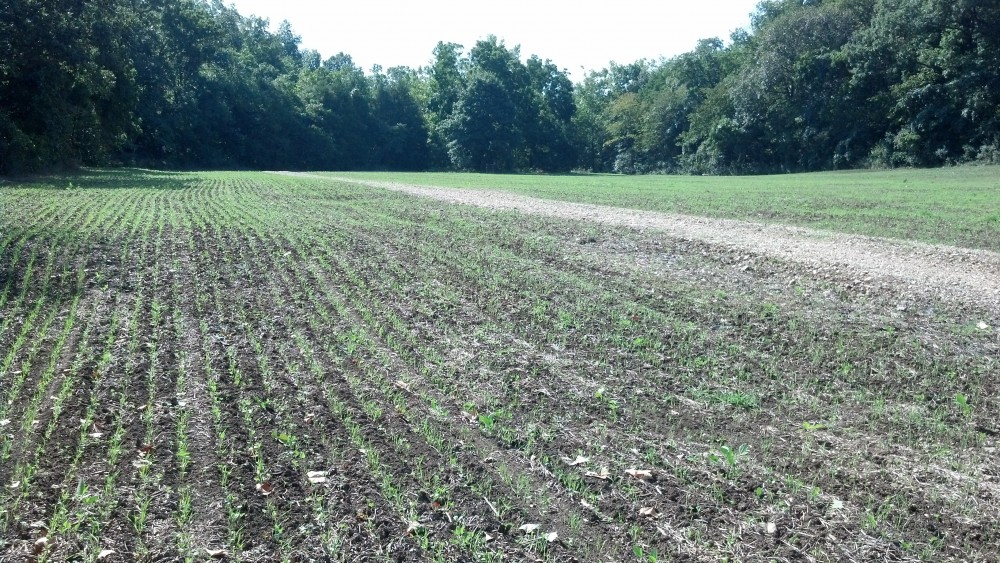Category: Hunting Tactics
Planning For Muzzleloader Season
For many whitetail hunters we’ve reached the late season post rut phase and it’s time to switch gears! We’ve been hunting trails, bottlenecks, and food plots lately but as we set aside our Prime bows and pick up our muzzleloaders for the opening of primitive season Saturday we’ll take a little time to talk about our strategy.
As you’ve heard me talk about recently the second rut is generally sometime during December here at The Proving Grounds. It’s caused by female fawns reaching approximately 60 or 70 pounds which triggers puberty and makes them receptive, and as every deer hunter knows, a hot doe is the number one attraction for a whitetail buck. The greatest thing about the second rut is unlike a mature doe who seeks cover when she becomes receptive, doe fawns go about their normal schedule. They are still going from cover to food, regardless if they are receptive or not.
Checking our Reconyx cameras recently I’ve noticed several bucks nudging doe fawns around food plots, even a couple hit list bucks! This makes them very prone to following hot doe fawns into a food plot during daylight hours! Even better!
Another great advantage of late season hunting over early season is frost. This time of year here at The Proving Grounds we usually receive a frost every morning, and this frost can be extremely heavy at times! During the cold weather months deer obviously are very concerned with staying warm, and like you and I when we’re trying to stay warm we don’t typically eat ice cream or any other frozen food! Putting this in hunters terms, deer don’t usually feed while there is a heavy frost on; they can be seen feeding mid morning (like the doe fawn we caught Trashman chasing last year) or they’ll feed more heavily in the afternoons.
Late season is one of my favorite times to hunt whitetails! You can usually be more successful hunting in the afternoons than mornings, and if you find a lot of doe fawns using the area, hang tight because a hit list buck will most likely make an appearance there.
Saturday afternoon, weather permitting, Grant and I will take to the field in hopes of finding that hot doe fawn with a hit list buck not far behind! Good luck to everyone headed out and be safe!
Daydreaming of whitetails,
Adam
New Hunting Strategies For The Late Season
If you are like us here at GrowingDeer.tv we have entered late season hunting with a buck tag still in our pocket. As any hunter knows that buck tag will burn a hole straight through your favorite pair of pants. Luckily, late season hunting is a great time to punch that tag! What can you do to ensure that buck tag is filled before seasons end?
The rut ends at the end of November here in the Ozark Mountains so we shift our focus to hunting food sources on ridge tops where we get steady winds. A problem we face with hunting ridge tops during late season is a lack of cover.
By this time of year most of the leaves have fallen from the trees leaving our Muddy treestands bare and leaving us vulnerable to being skylined. To solve this problem, Adam and I cut small oak saplings that hold their leaves late into the year, and used them to create cover around the stand. Cedar branches are a viable option as well. With just a hand saw and a few zip ties our favorite stand locations are ready for late season hunting.
Doe fawns are a buck hunter’s best friend this time of year. If quality food sources have allowed this year’s doe fawns to reach 70 pounds they will become receptive. This is what people refer to as the second rut. Mature does that are receptive hide from bucks, but doe fawns generally don’t change their pattern. They go from the cover to the food and back to the cover again, hopefully with a mature buck right behind!
The GrowingDeer Team will be hunting food sources heavily this week, hoping for a receptive doe fawn to bring the big boy right into our kill zone! Good luck and stay warm!
Chasing Whitetails together,
Brian
Hunting Strategies: How To Capitalize On the Storm
Post rut hunting can be very productive. Similar to the pre rut, it comes down to predicting when the deer are going to move and being in your stand when they do.
There is a large cold front pushing through the Midwest. Ice is accumulating as I write this. These conditions have our eyes lit up here at GrowingDeer.tv!
Some might say we are crazy for wanting to hunt the storm and its blustery conditions. If a hunter can chum up enough intestinal fortitude to get out and tough the weather immediately before and directly following a large winter storm, you might just find yourself gripping a big buck’s antlers.
Deer frequently have increased daytime deer activity just before and after abnormal weather. Many times before a large winter front I have observed deer moving to food in an almost frantic fashion. As a hunter, I would hate to miss that! Once the storm hits I usually stay in the warmth of my house as the deer are likely doing the same – seeking cover. Keep a watchful eye and when the first calm hours after the storm comes, head back to the woods and capitalize on the deer getting on their feet and moving to food.
A winter storm can be a great tool to use for bagging your next hit list buck. Remember to hunt on either end of the storm. That’s what the GrowingDeer Team will be doing this week, and just maybe we can have a repeat of last year’s late season harvest of a hit list buck we called “Trashman” (watch GDTV 163 here). Good hunting and stay warm!
Chasing Whitetails together,
Brian
Bow Hunting Whitetails: How To Select The Best Broadhead
Bow season is open or opens very soon in most states. Many hunters have been planting food plots, scouting, practicing with their bows, etc. During all this activity and excitement, don’t forget the point (pun intended) that determines if all this activity results in fresh tenderloins or tag soup! I’m referring to broadheads!
Broadheads kill deer by causing rapid blood loss. The more rapid the blood loss, the shorter the trail. Most reviewers of broadheads seem to focus on the amount of cutting surface and how straight it flies. These are certainly important characteristics. Another characteristic that’s very important to obtaining venison is the sharpness of the broadhead! I wrote about that a few weeks ago in a post titled Why Every Hunter Should Want The Sharpest Broadhead.
Sharp broadheads are very important! However, sharp is only good if the broadhead is strong enough to stay together as it passes through the critter. A deer’s vitals are protected by ribs and a shoulder bone. Rarely do deer present a perfect broadside shot so it’s often likely that a broadhead will enter through the ribs and need to exit through the shoulder bone.
This requires a very strong broadhead to retain its shape and function as designed. I tend to always hug the shoulder tightly with my aiming point. If the deer is quartering away from me at all such an aiming point will result in an exit through the shoulder bone.
I shot a doe that was quartering away at a steeper angle than I thought yesterday afternoon and the G5 Striker head made a perfect triangle hole in the off shoulder bone. The trail was easy to follow and there was fresh venison laying less than 100 yards from the Redneck Blind where I was hunting.
I hope to make the perfect shot each time. That’s not realistic. That’s why I suggest all hunters use a very sharp broadhead that is strong enough to penetrate bone and result in a good blood trail.
Growing and hunting deer together,
Grant
Deer Hunting: Realistic Practice Puts Tenderloins In The Freezer
I enjoy shooting both guns and bows! I was raised by a family that shot competitively. My father, mother, and both sisters and I have won numerous shooting matches in the National Muzzleloader Rifle Association’s competitions. I give all the credit for the wins to my father, Glen Woods.
My dad always had us practice in the same positions, at the same ranges, and at the targets we’d see at the upcoming matches. He’d also mix in some fun, like shooting at novelty targets.
The skills I learned as a child while being “coached” by my father have helped me through the years. However, just the knowledge of how to shoot won’t put many tenderloins in the freezer without continual practice.
I believe it is just as important for hunters to practice shot placement as it was for me as a competitor to practice with the exact conditions I would see during matches! A great method to do this is to practice using 3D targets! It’s very easy to focus on where the arrow/bullet strikes the target, especially paper targets. To consistently bring home tenderloin, knowing where the arrow/bullet exits is as important as the entrance.
To take this a step further, I like to practice with the broadheads and bullets I use to hunt with. Finally, I like to simulate the conditions of shooting at a critter versus practicing quietly by myself. I often have my buddies shoot with me and encourage them to be talking, teasing, etc., while I’m shooting.
Finally, I continue practicing during season. It’s easy to practice all summer and be shooting great at the first of the season. However, it’s easy to spend all of our free time hunting once season begins. As the temperatures change most hunters will wear different/more clothes. This can radically change the sight picture of shooting a bow and/or gun. In addition, muscle tone developed by frequently practicing with a bow can decrease substantially in a few weeks if the practice frequency or duration decreases.
I’ve been practicing with my hunting gear, and will continue practicing throughout the season. How about you?
Growing and hunting deer together,
Grant
Hunting Strategies: What I Don’t Like About the Rut!
I enjoy hunting the rut! I’ve hunted everyday this week and have seen deer every time out! What’s not to like about those odds? It may have something to do with where I hunt. I hunt a property that is primarily covered by oak timber. I’m sure mature bucks are seeking/chasing does as aggressively here as they are throughout most of the Midwest. Then why am I not seeing mature bucks? The answer is simple. In areas where the primary land use is agriculture crops, deer often stick to the areas with cover, even when searching/chasing does. The areas with cover are limited, therefore where deer are traveling and stand locations are easy to find!
When cover is the primary habitat type, deer simply don’t have to venture into the open except to feed on forage that requires sunlight reaching the ground. If there are plenty of acorns in the timber, then deer don’t tend to use the forage plots often – especially during daylight.
Bucks will cruise through food plots, and other openings during the rut, but not on a predictable pattern. The two pictures in this blog were from 700+ images from October 30th through November 8th. Hunting there would have produced some excitement related to seeing a mature buck only twice.
Data like this is why I hunt primarily known travel corridors (such as ridge tops where the topography is steep), etc. when hunting woodland habitat. Any type of bottleneck due to cover, topography, water, etc., can be an outstanding location during the rut.
Deer can also be relatively easily patterned during the late season when most acorns are gone and deer are hungry and trying to maintain/regain body weight. The late season can be a great time to pattern mature bucks, especially if there is quality forage/grain that hasn’t been hunted so much during the early season that deer associate the area with danger and only feed there at night.
The rut can be a very exciting time to hunt, especially if you hunt in an area where the primary land use is ag and most of the crops have been harvested by mid October. If the land use where you hunt is primarily timber and there are quality forage/grain crops in food plots, then the best time to pattern a mature buck will probably be during the late season when the food supply is limited and easy to scout.
It’s always about being able to identify and hunt the limited resource. Receptive does are the best limited resource during the rut. They are tough to pattern as they often change the portion of their range they use for 24-36 hours when they are receptive. That’s why the best odds to harvest a mature buck during the rut are to hunt cover where it is limited and travel corridors where cover is the primary land use.
Growing Deer together,
Grant
What Stage of the Rut is Occurring Where You Hunt?
This is a common question among hunters this time of year! Are mature bucks moving during daylight? Are bucks using scrapes, seeking does, chasing does, or are does receptive?
By making a few observations while in the field hunters can get a good indication of the stage of the rut where they hunt! The adult sex ratio is a huge factor in the intensity of the rut. One of the first considerations is the past adult deer harvest sex ratio. If primarily bucks have been harvested and you typically see and/or have trail camera pictures of mostly does from your area, then don’t expect a rip-roaring, mature bucks cruising everywhere type rut. If there are substantially more adult does than bucks, the bucks won’t have to travel very far to find a receptive doe. Your observations of rut behavior will likely be very limited if you hunt a herd where the adult sex ratio strongly favors does.
If you and the other hunters where you hunt have harvested deer with a goal of creating and/or maintaining a balanced adult sex ratio and allowed a large percentage of the bucks to live to at least three years of age, then you have the opportunity to experience a hunt with deer expressing a lot of rutting behavior.
In such areas, the first sign I look for is lots of scrapes being actively used. The scraping stage of the rut occurs between when bucks shed their velvet and before a majority of does are receptive. Certainly bucks, does, and fawns may use scrapes, especially the licking branch, throughout the year. However, the vast majority of marking and checking the ground portion of scrapes occurs between velvet shed and when a majority of the does are receptive. If you are seeing lots of fresh scrapes – the chase phase of the rut is probably one to three weeks away at that location.
After the scrape phase, its’ common to see (in person or on trail cameras) mature bucks actively walking with purpose. They seem to be going somewhere. They are not taking a few steps and stopping to eat or check for threats (normal mature buck behavior). This is the seeking stage. Mature bucks are moving – but very few chases (bucks chasing does) are observed.
The seeking stage often changes to the chasing phase within a few hours or days. During this stage all bucks (unless they are injured) will actively chase does that are receptive. It’s common to see multiple bucks chasing a single doe. A more common observation during this phase of the rut is to see fawns without a doe. Does tend to abandon their fawns while they are receptive to breeding. If you are hunting and see several fawns without does (and it’s not because a substantial doe harvest just occurred), you know two things: the chase phase is on and the receptive does (and therefore the bucks) are using a different area. You probably need to change stand locations!
I’ve asked the GrowingDeer.tv Team that uses our Facebook page to keep us updated on the stage of the rut they are seeing – real time useful information to help those that haven’t been in the woods for a few days. This is a very exciting time to hunt! Join us on Facebook and get up to date information!
Growing (and hunting) Deer together,
Grant
Stage of the Rut
Adam and I just returned from hunting with the guys at Foxworthy Outdoors in Georgia and at the Kentucky Proving Grounds. At both places almost every doe we saw was with fawns. Does typically separate from their fawns before they become receptive to bucks. Seeing most does with fawns is a reliable sign that most does are not receptive to bucks. In addition, the only mature bucks we saw were just at dark or while going or returning hunting (before sunrise or after sunset).
The bottom line is that we didn’t see any signs of pre-rut activities. We did see several scrapes and rubs. All deer in the herd, bucks, does, and fawns use scrapes throughout the year. They certainly use scrapes more during the early portion of the pre-rut than other times of year. Some of my buddies in northern states have seen a few bucks scent checking does. The temperatures have been cooler in the northern states and I suspect the bucks are feeling a bit more like chasing.
I predict that the next cold front will bring an explosion of pre-rut behavior! I’ll be hunting food sources or stands that are best for the early season pattern of deer moving between food and cover until the next cold front. About a day before a cold front is predicted to reach my place, I’ll start selecting stands in travel corridors, etc. Once the bucks start seeking does, travel corridors that have a history of being used during the rut will likely offer a better chance of being used during daylight by mature bucks than those areas used by deer during the late summer for food or cover.
I live and hunt mainly in southern Missouri. If you hunt in the deep southern states it will likely be awhile before you need to switch hunting strategies. If you hunt north of Missouri, I suspect deer are already displaying pre-rut behavior.
If you would like my current observations about the stage of the rut, you can check my Facebook page as I’ll regularly share my observations.
Growing (and hunting) Deer together,
Grant
Scouting Whitetails: How Locating Small Game Leads to Harvesting Bucks
It’s September 28th and Grant and I have already been lucky enough to get a great buck on the ground! Last week we took a trip to the great state of Kansas, where Grant had been drawn for the early muzzleloader permit. The conditions were very enjoyable, with temperatures generally only reaching the mid to upper 70s. Unfortunately, the night time temperatures weren’t getting much lower than 60 degrees, meaning the deer still weren’t moving a lot during daylight hours.
The first two days of our hunt were slow, with only a few encounters. The main highlight happened on the evening of day two when the landowner, Grant, and I made a quick approach to a field right before dark and found a bachelor group of bucks. One was a nice looking buck, but after some further examination he was only three and a half years old. During day three a front was coming through and was causing the winds to shift from southeast to northwest. Great news for us! But also with this cold front, the night time temperatures were predicted to drop to the upper 30s! Now we had a westerly wind and what was predicted to be the coldest night of the fall. Now we were in the game!
With the weather changing and a westerly wind, Grant and I could enter into a proven (and favorite) spot. This small field had large wheat fields to the west, a bedding area to the east, and it was surrounded with large oak trees. The large oak trees had produced acorns in the past helping Grant harvest a nice buck just two years earlier (GDTV 48).
On the third night the wind was predicted from the northwest so Grant and I eased to the field edge from the southeast. While making our approach down a small road we were noticing scrapes and rubs, something we hadn’t seen much, if any, of prior to that evening. Our hopes were high and they started to get higher when Grant and I sat staring across the field listening to the constant sound of squirrels and turkeys in the woods surrounding the field. This meant one thing. We had found the main food source for the squirrels and turkeys. We just hoped it was the same for the deer, and judging by the amount of deer sign walking in it certainly was. That evening ended with only a couple doe sightings but the temperatures weren’t forecasted to drop until that night.
The next morning the temperature stepping out of the truck was 35 degrees, the coldest morning so far this season. The wind was almost non-existent, so we knew thermal winds would play the more important role. We approached from the north and set up on the northeast end of the field, letting the thermal winds pull our scent downhill and away from the field. The morning was crisp and cool but was surprisingly slow until 8 o’clock. By this time the sun was up and starting to shine on the field, causing the thermal winds to begin shifting towards the field. Not good for us. We quickly decided to ease along the edge of the field to the south side, putting the wind back in our faces. Before I completely give the story away I’ll mention the three key elements to our success and let you watch it all unfold on the next episode.
Locating small game species was essential to this hunt
Not ruining the spot before the conditions are right
We didn’t hunt the field until the wind was in our favor, we could have gone in on day one of the hunt and contaminated the area with our scent, ultimately leading to no success.
Locating the food source by finding the squirrels and turkeys
When Grant and I entered on night three we could hear the turkeys and squirrels in the woods, but we never entered the woods to make sure there were acorns on the ground. We trusted our ears and left the woods untouched.
Using a Scent Control System
As you watch the hunt unfold, you’ll notice the deer placing their nose in the air trying to catch wind of something. That something is us, the predators! I mentioned the thermals switching on us as the morning progressed — this buck knew something was up but could never put his nose on it. Literally! If it wasn’t for a constant use of Dead Down Wind products and our ScentMaster system this hunt would have never been a success.
While sitting in your stand this week take some time and listen for turkeys and squirrels and see if you can locate their feeding area. Chances are that is where the deer are feeding also!
Dreaming of Giant Whitetails together,
Adam
Bow Hunting: Early Season Plan of Attack
It’s September 14 and we’re only one day away from the opener of Missouri archery season! SAWEEEET!!! The wait is almost over, and all the preseason preparation is about to be put to the test. There are the months of shooting your bow, hanging and trimming treestands, washing your clothing, planting food plots and possibly looking through thousands of Reconyx images, all for the hopes of tagging a trophy buck! Now that the season opener is knocking at our door, I’m sure we’re all drawing out a game plan. If you’re in an area that has a great acorn crop you’re probably planning on heading into your best oak stand. Those of you in areas dominated by crop fields, you’ve probably spent the summer glassing bucks in velvet and will find yourself sitting on the edge of the field somewhere with high expectations. As of a week ago Grant and I were planning on being in the woods listening to acorns fall, but with recent scouting our plan has changed!
Throughout the summer we’ve located several big red and black oak trees with lots of acorns on them. As the acorns have matured and began to fall we’re noticing more and more uneaten acorns lying on the ground. While working this morning spreading some Deer Trac, I noticed a lot of fresh browse on young soybeans and wheat, and a very large amount of tracks around. This certainly fits the definition for M.R.I. (Most Recent Information) so Grant and I will find ourselves staring at a nice Eagle Seed Buck Monster Wheat food plot on Saturday afternoon hoping for the chance at a hit list buck!
Good luck to all my fellow bow hunters who will be hitting the woods this weekend and in weeks to come! Be safe and always have fun!
Dreaming of Giant Whitetails together,
Adam



